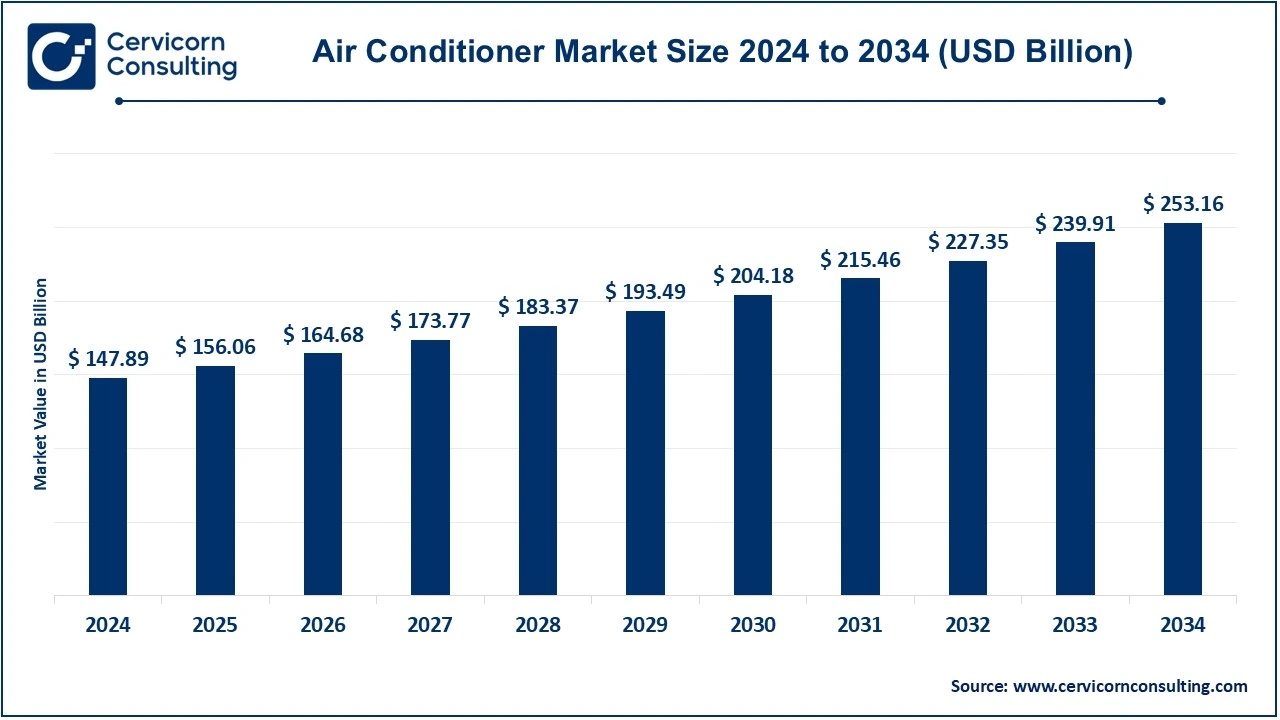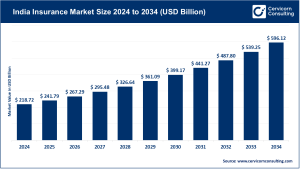Air Conditioner Market Overview
The global air conditioner market is estimated at USD 147.89 billion in 2024 and is projected to exceed USD 253.16 billion by 2034, expanding at a CAGR of 5.52% from 2025 to 2034. This growth is driven by rising urbanization, increasing global temperatures, and improved living standards. Both residential and commercial sectors, especially in developing countries, are experiencing strong demand due to infrastructure growth and a rising middle-class income. Additionally, technological advancements such as inverter technology, smart ACs, and eco-friendly refrigerants are accelerating market expansion.
🔹 Key Market Trends
-
Eco-Friendly & Energy-Efficient Refrigerants: Transition from traditional HFCs (R-410A, R-134A) to low-GWP refrigerants like R-32, R-290, and R-717 is reducing carbon footprint and energy use.
-
Smart AC Systems: IoT and AI integration enables remote operation, predictive maintenance, and optimized energy use, aligning with smart home adoption.
-
Advanced Air Filtration: Modern ACs include high-efficiency filters that remove allergens, dust, and pollutants, enhancing indoor air quality.
-
Solar-Powered AC Units: Solar-assisted systems are increasingly adopted in regions with high electricity costs and abundant sunlight.
-
Inverter Technology: Over 60% of new AC models feature inverter systems, reducing power consumption by up to 30% and boosting efficiency.
🔹 Market Drivers
-
Urbanization & Infrastructure Growth: With more than 55% of the global population living in urban areas, demand for residential and commercial AC systems is surging.
-
Rising Disposable Incomes: Higher purchasing power in emerging economies is driving investments in comfort-oriented appliances like smart and inverter ACs.
-
Population Growth: Expanding populations, particularly in Gulf countries, are increasing demand for residential, medical, and educational facilities, thereby boosting AC sales.
-
Government Regulations & Incentives: Policies supporting energy-efficient appliances, such as tax rebates and subsidies, encourage adoption of high-performance ACs.
🔹 Impact of Trends and Drivers
-
Residential vs. Commercial Applications: Smart and inverter ACs are becoming popular in urban residences, while energy-efficient central ACs dominate commercial sectors.
-
Regional Influence: Asia-Pacific leads with 54% revenue share in 2024, driven by rapid urbanization. North America (26%) and Europe emphasize sustainable and energy-efficient solutions.
-
Technological Innovation: Adoption of eco-friendly refrigerants and smart systems is shaping product offerings and influencing consumer choices worldwide.
🔹 Challenges & Opportunities
-
Challenges: High initial costs for smart and solar-assisted ACs, variable refrigerant regulations, and energy infrastructure limitations in some regions.
-
Opportunities: Growing awareness of sustainability, expansion of smart home ecosystems, and government incentives provide growth potential for manufacturers.
🔹 Future Outlook
Emerging technologies like IoT-enabled systems, inverter technology, and solar-powered ACs are set to redefine energy efficiency and sustainability standards, with the Asia-Pacific region continuing to lead demand.


